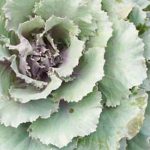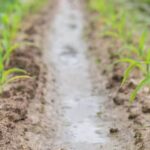Are you interested in learning all you need to know about fruit and vegetable gardening? Whether you’re a seasoned gardener or just starting out, this comprehensive guide will provide you with the information and tips you need to successfully grow your own produce right in your backyard.
Fruit and vegetable gardening is not only a rewarding and fulfilling hobby, but it also allows you to have access to fresh, organic produce at your fingertips. There’s nothing quite like the satisfaction of harvesting your own fruits and vegetables and enjoying the taste of homegrown goodness. In addition, gardening can also be a great way to save money on grocery bills and promote sustainability by reducing reliance on store-bought produce.
In this section, we’ll provide an overview of why fruit and vegetable gardening is such a popular and beneficial activity. From the advantages of growing your own food to the joy of nurturing plants from seed to harvest, we’ll explore the many reasons why so many people are drawn to fruit and vegetable gardening. So sit back, grab your gardening gloves, and let’s dig into all there is to know about this incredibly rewarding pastime.
Getting Started
When it comes to fruit and vegetable gardening, one of the most important factors to consider is choosing the right location and soil for your garden. The success of your garden largely depends on this initial step, as the location and soil will directly impact the growth and yield of your plants.
Location
The first step in choosing the right location for your fruit and vegetable garden is to ensure that it receives adequate sunlight. Most fruits and vegetables require at least 6-8 hours of direct sunlight each day. Additionally, you’ll want to select a location that has good drainage to prevent waterlogging, as overly wet soil can lead to root rot and other issues.
Soil
The next step is to assess the quality of your soil. Good soil is essential for healthy plant growth, so it’s important to test your soil’s pH levels and nutrient content.
You can do this by using a home testing kit or by sending a sample to a local agricultural extension service. Depending on the results, you may need to amend your soil with organic matter, such as compost or well-rotted manure, to improve its texture and fertility.
Choosing the Right Location and Soil
Overall, choosing the right location and soil for your fruit and vegetable garden is crucial for a successful harvest. By ensuring that your garden receives adequate sunlight, has good drainage, and contains healthy, nutrient-rich soil, you will set yourself up for a bountiful harvest of delicious fruits and vegetables.
Keep these factors in mind as you embark on your gardening journey, and you’ll be well on your way to reaping the rewards of all you need know about fruit and vegetable gardening.
Essential Tools for Fruit and Vegetable Gardening
When it comes to fruit and vegetable gardening, having the right tools can make all the difference in ensuring a successful and productive harvest. Here are some essential tools that every gardener should have:
1. Hand Trowel: A hand trowel is a small handheld tool with a pointed, scoop-shaped metal blade. It is perfect for digging small holes for planting seeds or transplants, breaking up soil, and mixing in amendments.
2. Pruning Shears: Also known as secateurs, pruning shears are essential for keeping your fruit trees, berry bushes, and vegetable plants in good shape. Use them to trim away dead or diseased branches, prune back overgrown foliage, and harvest ripe fruits and vegetables.
3. Garden Fork: A garden fork is a sturdy tool with several tines that are used for turning over soil, breaking up clumps, and incorporating organic matter into the ground. It’s especially useful when preparing the soil for planting larger fruit trees or digging up root vegetables like potatoes.
4. Watering Can or Hose: Adequate hydration is crucial for the health and growth of your fruit and vegetable plants. Whether you opt for a traditional watering can or a hose with an adjustable spray nozzle, make sure you have a convenient way to deliver water to your garden beds.
5. Garden Gloves: Protect your hands from thorns, prickly stems, and abrasive soils with a good pair of garden gloves. Look for ones that fit well, provide grip, and are durable enough to withstand regular use.
Having these essential tools on hand will help ensure that you’re prepared for all aspects of fruit and vegetable gardening – from planting to maintaining to harvesting.
Selecting the Right Plants
When it comes to fruit and vegetable gardening, selecting the right plants is crucial to the success of your garden. With so many varieties to choose from, it can be overwhelming to decide which fruits and vegetables to grow. However, by understanding the different options available, you can make informed decisions that will ensure a bountiful harvest.
Fruit Varieties
When choosing fruit varieties for your garden, consider factors such as climate, soil conditions, and space limitations. Popular options for home gardens include strawberries, blueberries, raspberries, apples, pears, peaches, and cherries. It’s important to research specific varieties that are well-suited to your region and have good disease resistance.
Vegetable Varieties
The world of vegetable gardening offers an abundance of choices for home growers. From tomatoes and peppers to lettuce and carrots, the options are endless. When selecting vegetable varieties for your garden, consider factors such as taste preferences, growing season length, and space requirements. Additionally, look for disease-resistant varieties that will help minimize potential problems in your garden.
Herb Varieties
In addition to fruits and vegetables, many gardeners also enjoy growing herbs. Herbs such as basil, thyme, rosemary, and cilantro can add flavor and aroma to your dishes while also attracting beneficial insects to your garden.
When choosing herb varieties, consider the culinary uses you have in mind as well as how they will complement the other plants in your garden. By carefully selecting a variety of fruits, vegetables, and herbs for your garden, you can create a diverse and thriving growing space that provides fresh produce throughout the growing season.
Planting and Care
Planting and caring for your fruits and vegetables is crucial for a successful garden. Here are some tips to help you ensure that your plants thrive:
1. Planting:
When planting your fruits and vegetables, it’s important to consider the spacing between different plants. Different varieties require different spacing, so be sure to research the ideal distance for each type of plant. Additionally, make sure to plant at the right time of year for each specific crop, as some may be more suitable for spring planting whereas others may thrive in the fall.
2. Watering:
Proper watering is essential for the health of your plants. Be sure to water deeply and infrequently, as this encourages healthy root growth. Additionally, consider investing in a drip irrigation system to ensure consistent watering, especially during dry spells.
3. Fertilizing:
Fruits and vegetables have specific nutritional needs, so be sure to fertilize them accordingly. Consider using organic fertilizers that provide essential nutrients without harming the environment or your produce.
4. Pruning and Maintenance:
Regular maintenance tasks such as pruning, weeding, and mulching can greatly improve the health and productivity of your garden. Pruning helps promote air circulation and prevent disease, while mulching helps retain moisture in the soil and suppress weeds.
By following these planting and care tips, you can enjoy a bountiful harvest of fresh fruits and vegetables from your garden.
Dealing With Pests and Diseases in Your Garden
One of the biggest challenges of fruit and vegetable gardening is dealing with pests and diseases that can wreak havoc on your plants. There are a variety of insects, animals, and microorganisms that can threaten the health and productivity of your garden. However, with the right knowledge and tools, you can prevent, identify, and manage these issues effectively.
Prevention is key when it comes to managing pests and diseases in your garden. Start by choosing disease-resistant plant varieties whenever possible. Additionally, practicing good garden hygiene by regularly cleaning up debris and removing dead or diseased plants can help minimize the risk of infestations. Proper spacing between plants can also improve air circulation and reduce the likelihood of certain diseases.
When it comes to pest management, there are several organic methods you can use to protect your plants without resorting to harmful chemicals. For example, introducing beneficial insects like ladybugs or lacewings can help keep populations of destructive pests in check. Additionally, natural repellents such as neem oil or garlic spray can deter unwanted visitors without causing harm to your plants or the environment.
In some cases, despite our best efforts at prevention, pests and diseases may still affect our gardens. It’s important to regularly inspect your plants for any signs of trouble, such as holes in leaves, discoloration, or unusual growths. By catching problems early on, you have a better chance of implementing effective control measures before they escalate. Whether it’s using homemade remedies or seeking advice from local gardening experts, staying proactive is crucial for maintaining a healthy garden.
Ultimately
and vegetable garden. By being informed about potential threats and employing responsible practices for pest.
management
Harvesting and Storing Your Fruits and Vegetables
Once you have put in the hard work of planting and caring for your fruit and vegetable garden, it is time to reap the rewards of your efforts. Harvesting your produce at the right time is crucial to ensure that they are at their peak flavor and nutrient content. Knowing when to pick each type of fruit or vegetable is key, as harvesting too early or too late can affect the taste and quality of your crops.
When it comes to storing your harvested fruits and vegetables, proper handling is essential to prolong their shelf life. Some fruits, such as apples and oranges, can be stored at room temperature, while others like berries and leafy greens need to be refrigerated immediately after harvest. Vegetables like carrots and onions can be stored in a cool, dark place for several weeks. Understanding the specific storage requirements for each type of produce will help you avoid spoilage and wastage.
For those with an abundant harvest, consider preserving your extra fruits and vegetables through methods such as freezing, canning, or drying. These techniques allow you to enjoy your homegrown produce throughout the year, even after the gardening season has come to an end. Properly preserved fruits and vegetables also make great gifts for friends and family, allowing you to share the abundance of your garden with others.
In summary, harvesting and storing your fruits and vegetables is a critical part of fruit and vegetable gardening. By understanding when to harvest each type of produce and how to store them properly, you can enjoy the fresh flavors of your garden for longer periods. Additionally, exploring preservation methods can help you make the most out of your bountiful harvests while reducing waste.
Maximizing Your Yield
When it comes to fruit and vegetable gardening, maximizing your yield is essential for a successful and bountiful harvest. There are several tips and techniques that can help you get the most out of your garden, from proper plant care to strategic planning. By following these guidelines, you can ensure that your garden produces an abundance of fresh and delicious fruits and vegetables.
One of the most important factors in maximizing your yield is proper plant spacing. It’s crucial to give each plant enough room to grow and thrive without overcrowding. This allows for better airflow, which can reduce the risk of disease, and also ensures that each plant has access to adequate sunlight and nutrients. Different plants require different spacing, so be sure to research the needs of each variety before planting.
Another key aspect of maximizing your yield is regular maintenance and care. This includes watering, fertilizing, and pruning as needed. Providing the proper care for your plants not only encourages healthy growth but also helps prevent issues such as nutrient deficiencies or pest infestations. Additionally, staying on top of regular maintenance tasks allows you to address any potential problems before they escalate.
| Maximizing Your Yield Tips | Benefits |
|---|---|
| Proper plant spacing | Allows for better airflow,reduces risk of disease,and ensures access to sunlight and nutrients. |
| Regular Maintenance | Encourages Healthy Growth ,prevents nutrient deficiencies or pest infestation ,address problematic areas before escalation. |
In addition to proper care, using organic fertilizers and natural pest control methods can also contribute to a bountiful garden. Organic fertilizers provide essential nutrients to the soil without harmful chemicals, promoting healthy growth and fruit production. Natural pest control methods help protect your plants without harming beneficial insects or contaminating your produce with synthetic pesticides.
By implementing these tips for maximizing your yield in fruit and vegetable gardening, you can set yourself up for success in achieving a bountiful harvest. With careful planning, proper care, and attention to detail, you can enjoy a plentiful supply of fresh fruits and vegetables straight from your own garden all season long.
Conclusion
In conclusion, fruit and vegetable gardening is not only a rewarding hobby but also a sustainable and cost-effective way to ensure a fresh supply of produce. With the right location, soil, tools, plant selection, and care, anyone can create a thriving garden that provides an abundance of fruits and vegetables.
While dealing with pests and diseases may pose challenges, there are effective methods to minimize their impact on your garden. Harvesting and storing your produce is equally important to enjoy the full benefits of your hard work.
The joy of fruit and vegetable gardening lies in the satisfaction of growing your own food and the knowledge that it is free from harmful pesticides or chemicals. There is also a sense of pride in being able to share homegrown produce with family and friends.
Additionally, gardening offers numerous health benefits such as exercise, stress relief, and exposure to fresh air and sunlight. Beyond the physical rewards, cultivating a garden fosters patience, responsibility, and an appreciation for nature’s cycles.
Whether you have limited space or experience, fruit and vegetable gardening is accessible to everyone. By following the right steps and being attentive to your plants’ needs, you can enjoy a bountiful harvest throughout the year. The journey from seed to plate is truly fulfilling – both for your well-being and for the environment. All in all, fruit and vegetable gardening offers immense gratification while contributing to sustainable living practices.
Frequently Asked Questions
How Do You Start a Fruit and Vegetable Garden for Beginners?
Starting a fruit and vegetable garden as a beginner requires some planning and research. First, choose a location with ample sunlight and good drainage. Then, decide which fruits and vegetables you want to grow and consider the space required for each plant. It’s also important to prepare the soil by adding compost or fertilizer before planting.
What Vegetables and Fruits Should Be Planted Together?
When planting vegetables and fruits together, it’s important to consider their compatibility. Some vegetables such as tomatoes, carrots, and lettuce can be planted alongside fruits like strawberries and blueberries. However, it’s crucial to avoid planting certain crops together as they may compete for nutrients or attract pests that can harm each other.
What to Consider When Planting a Vegetable Garden?
When planting a vegetable garden, there are several factors to consider. First, think about the climate in your area and choose plants that are suitable for the conditions.
Consider the amount of sunlight your garden receives and select vegetables that thrive in those light conditions. It’s also important to plan for proper spacing, irrigation, pest control, and fertilization to ensure a bountiful harvest.

If you’re looking to get into vegetable gardening, or are just looking for some tips on how to make your current garden better, then you’ve come to the right place! My name is Ethel and I have been gardening for years. In this blog, I’m going to share with you some of my best tips on how to create a successful vegetable garden.





